Japanese
Garden
in Daisen Park



Sakai, Osaka / / ℃
Sakai, Osaka / / ℃
Sakai has long played an important role as a gateway between Japan and continental Asia. As the base for trade ships called "kenmin-sen," it introduced advanced technology and culture from the continent to Japan, which had a major impact on the nation as a whole. At that time, the city flourished as a place of freedom with its own unique culture. The Japanese Garden in Daisen Park encapsulates Sakai's rich history and culture. The park is designed in the traditional tsukiyama rinsen kaiyu style. Water spills down from the Togen-dai lawn area and flows beautifully across the vast grounds, interweaving through scenic sports, before finally emptying out into a large pond that represents the sea.
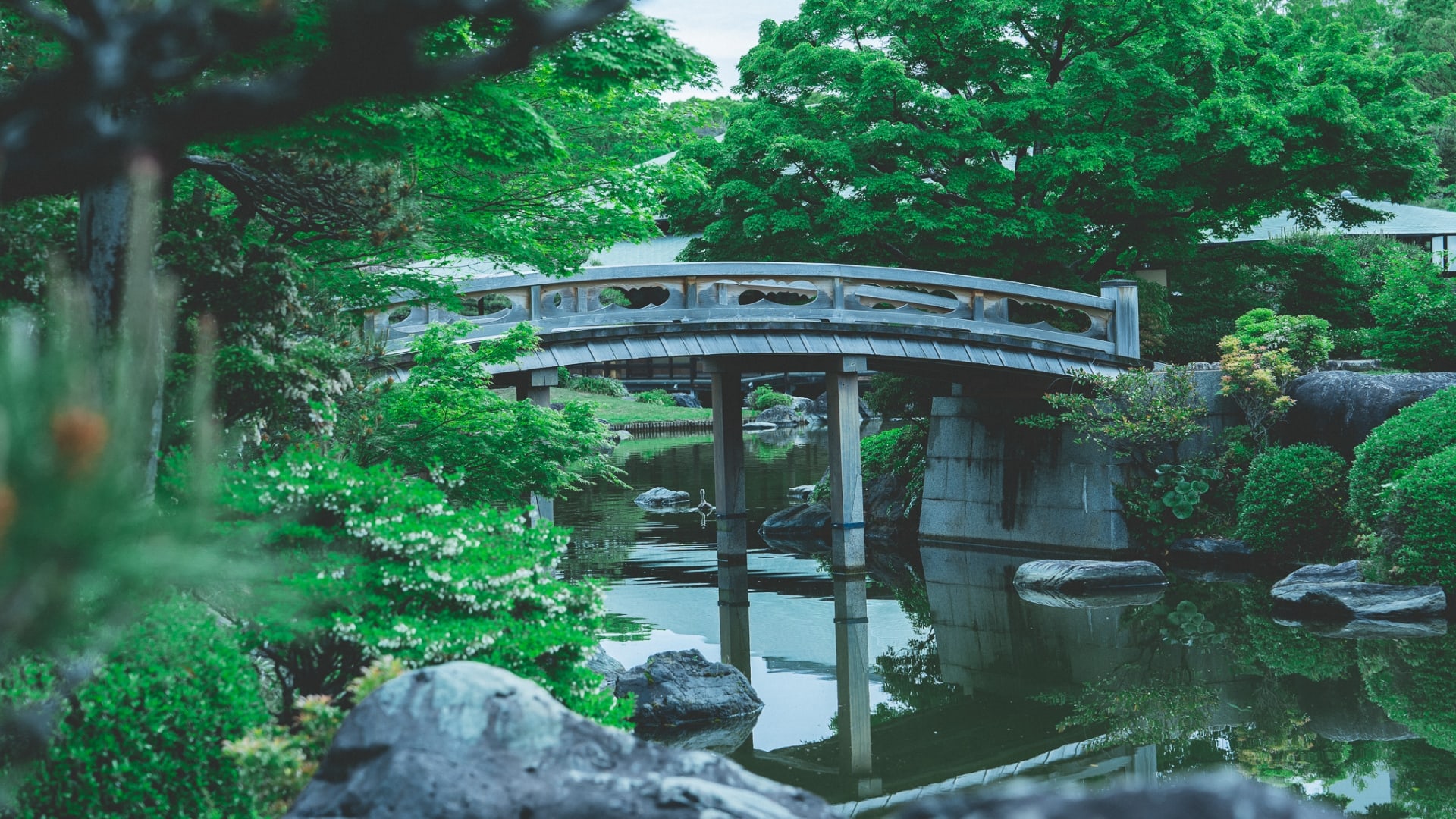
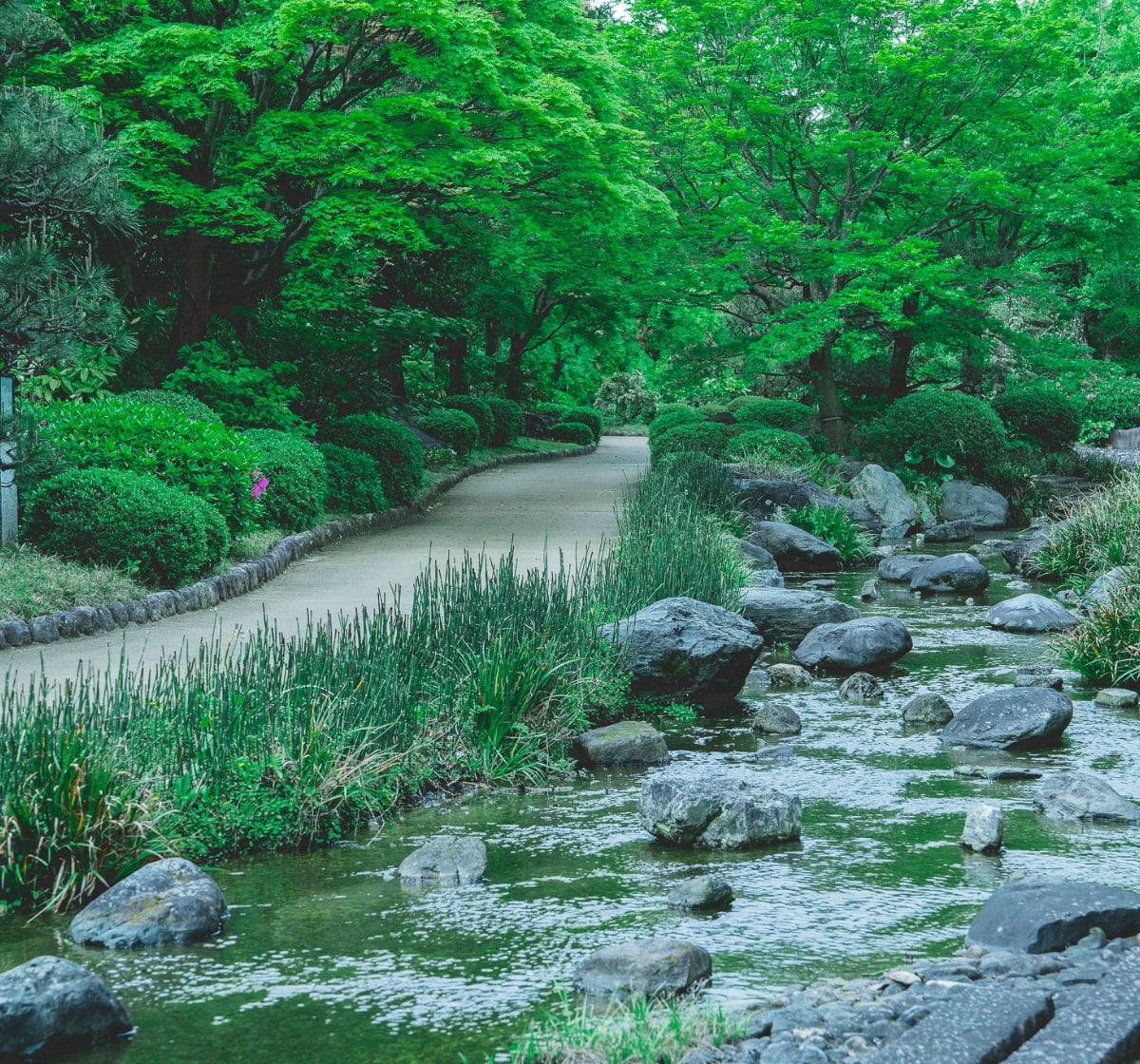
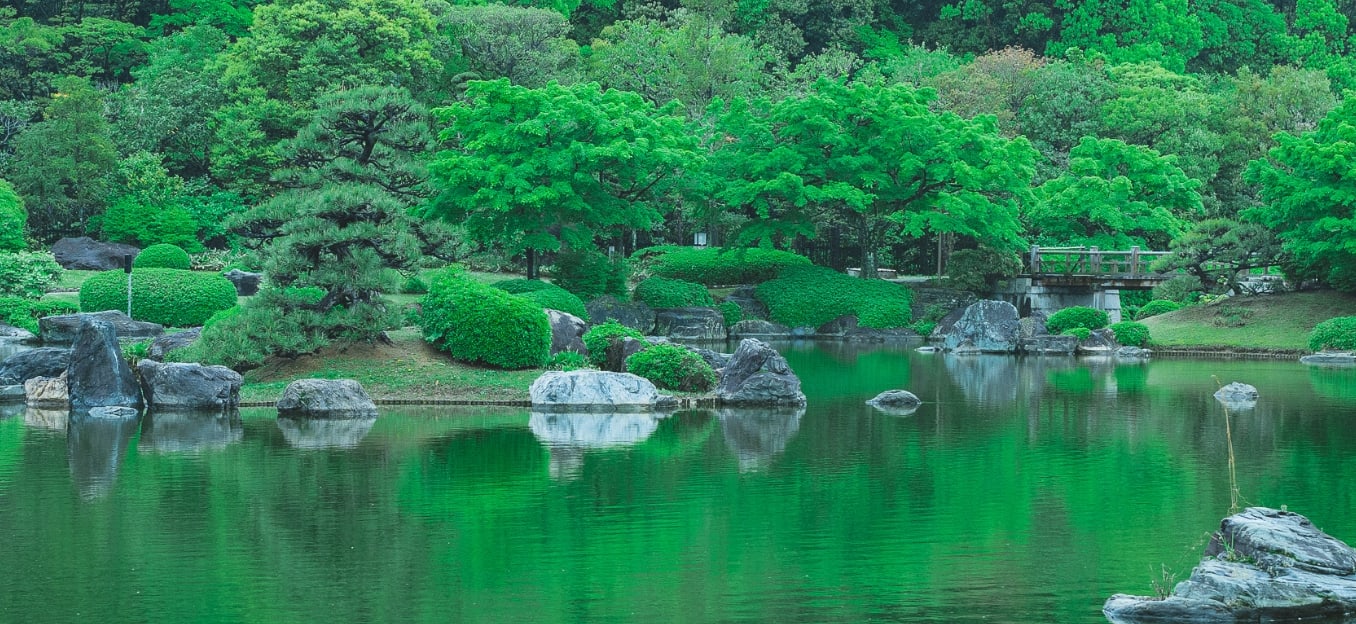
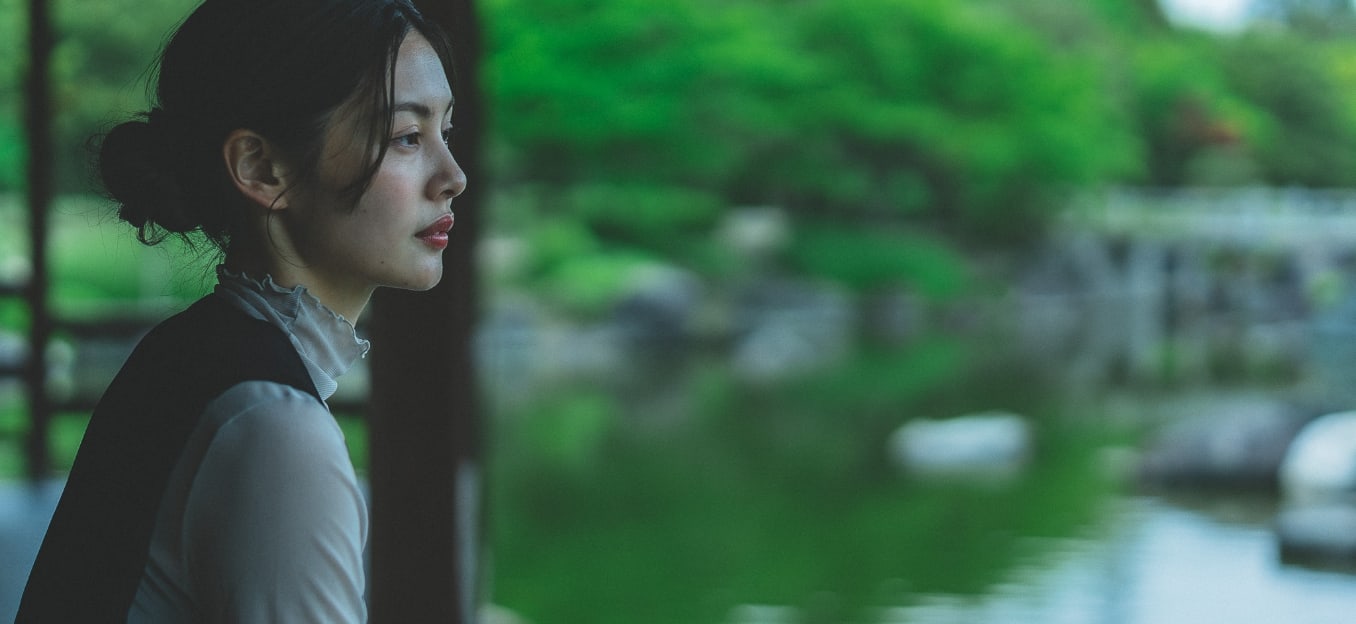
The garden's designer is Kinsaku Nakane, who is also famed for the design of the Japanese gardens at the Adachi Museum of Art. Nakane designed the garden with mountains and water as motifs. The artificially built hills represent the mountains of the Senboku Hills, while the waterfall, streams and water flow depict the water flowing from the mountains. The Chisen Pond represents Osaka Bay. The garden consists of an area of 26,000 ㎡, and if you walk around alongside the waterscape which encompasses a third of this area, you can circle around the whole garden.
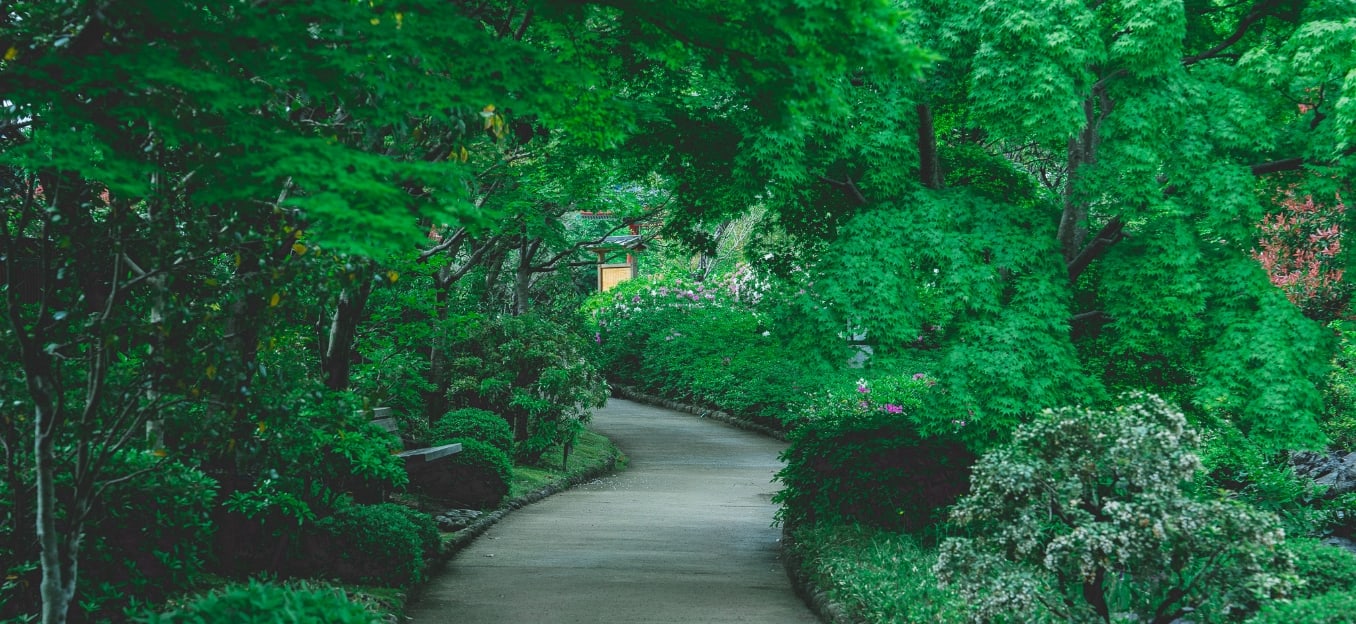

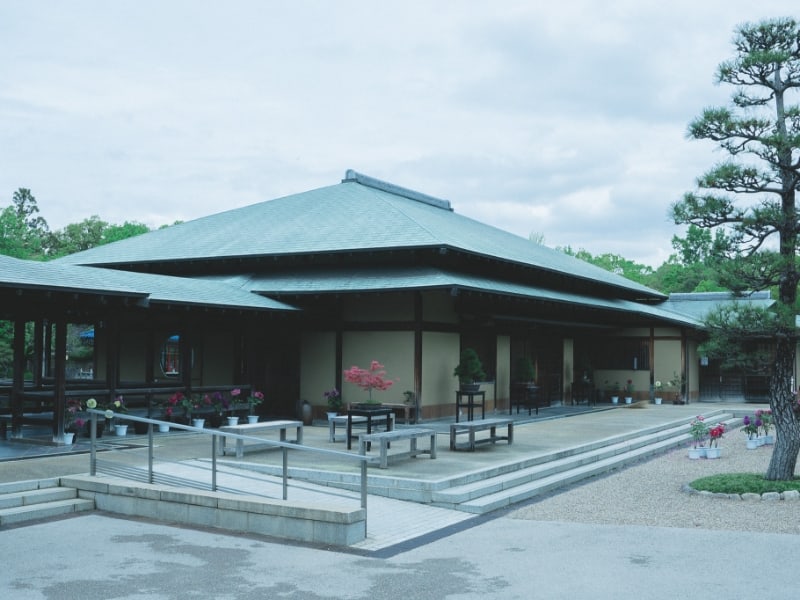
This building was built while envisioning "nayashu" (otherwise known as "egoshu"), which was a meeting place for wealthy merchants in Sakai to meet in the late medieval period. The nayashu played a vital role in Sakai's political economy.
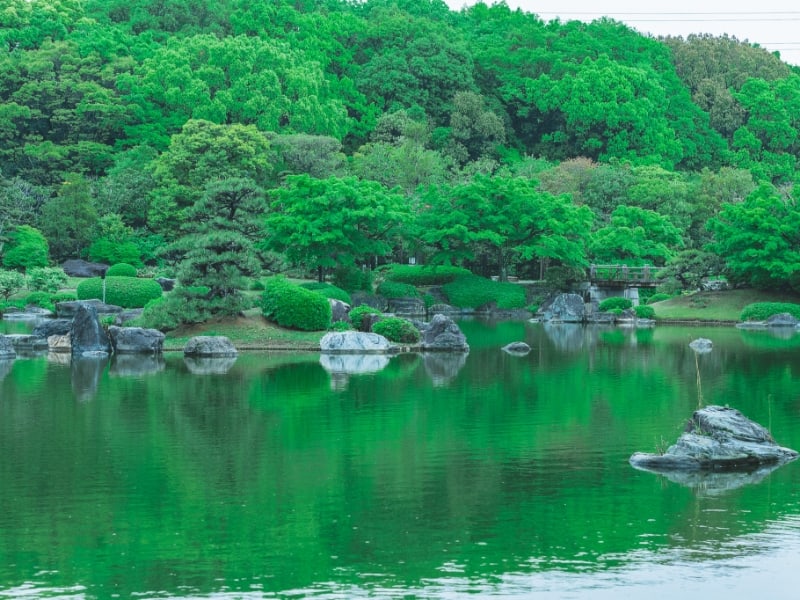
The pond represents the ocean, while the buildings and attached facilities on the east side represent Sakai City, and the west side on the opposite side represents the Chinese mainland. This highlights Sakai City's prosperity through international exchange, including its relations with Lianyungang, its sister city.
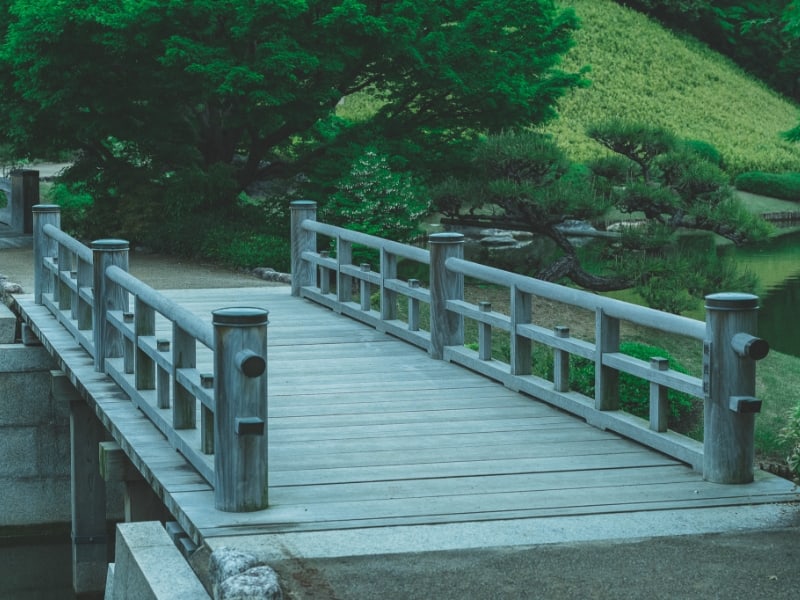
The Eiha Bridge is a flat bridge that extends to Nakajima, the island in the middle of the Chisen Pond, resembling the ocean. This symbolizes a bridge between the eastern coast of Sakai City and the western coast of China.
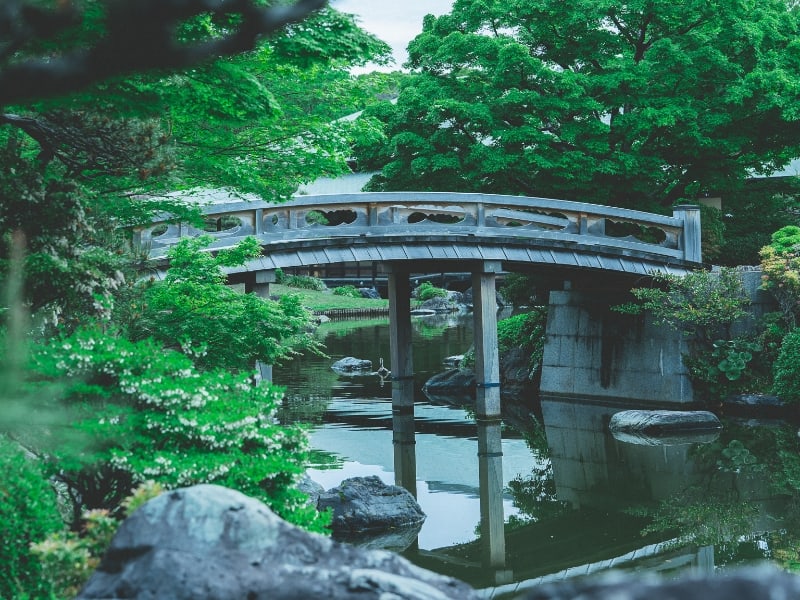
Ingetsu Bridge connects to Nakajima in Chisen Pond, like the Eiha Bridge.From the bridge, visitors can enjoy the beautiful scenery that reflects on the water's surface, and the shifting seasons rippling along the water's waves.
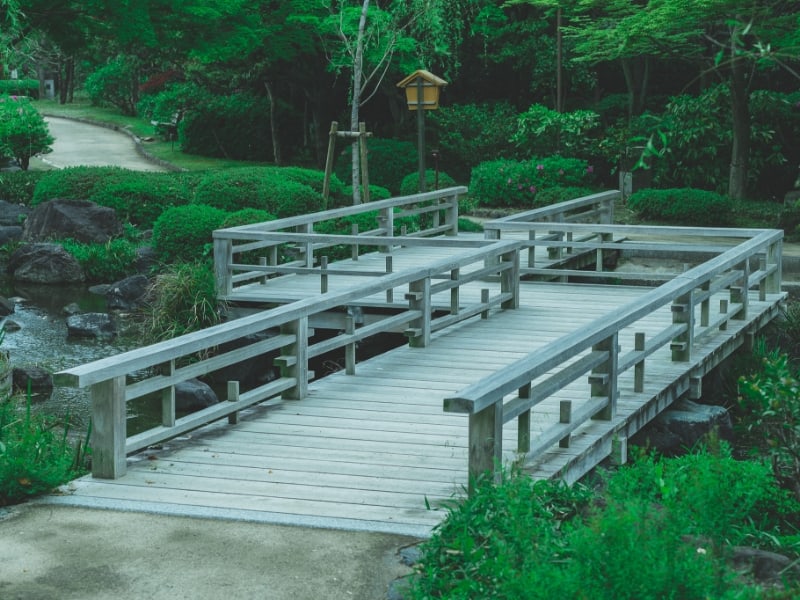
This bridge is where the Ishizu Stream enters into the Chisen Pond. It's renowned as a spot to watch the swallows fly between the willow trees in spring.
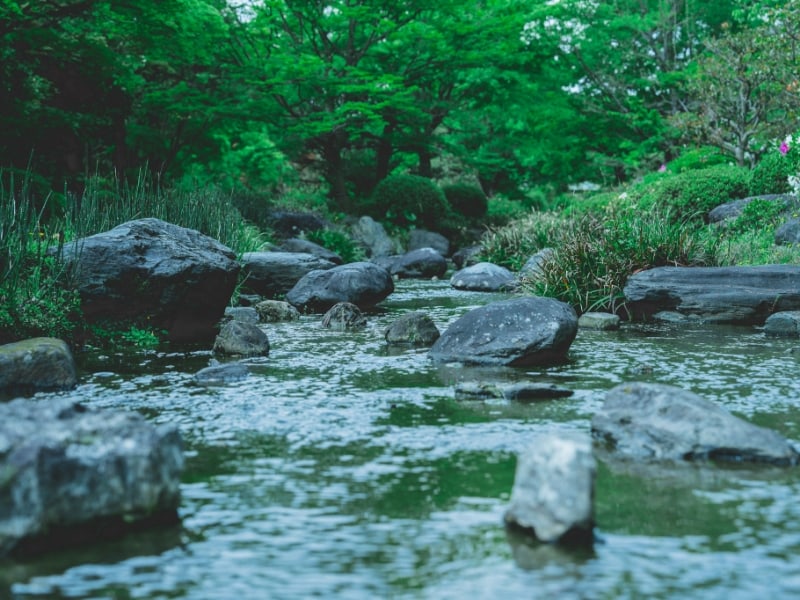
This stream is modeled after the Ishizu River, which has supported the livelihood and culture of Sakai's locals from ancient times to the present. The stream originates at Togen-dai and flows into the pond (ocean) while exhibiting an array of expressions, such as gently meandering streams and gushing small waterfalls.
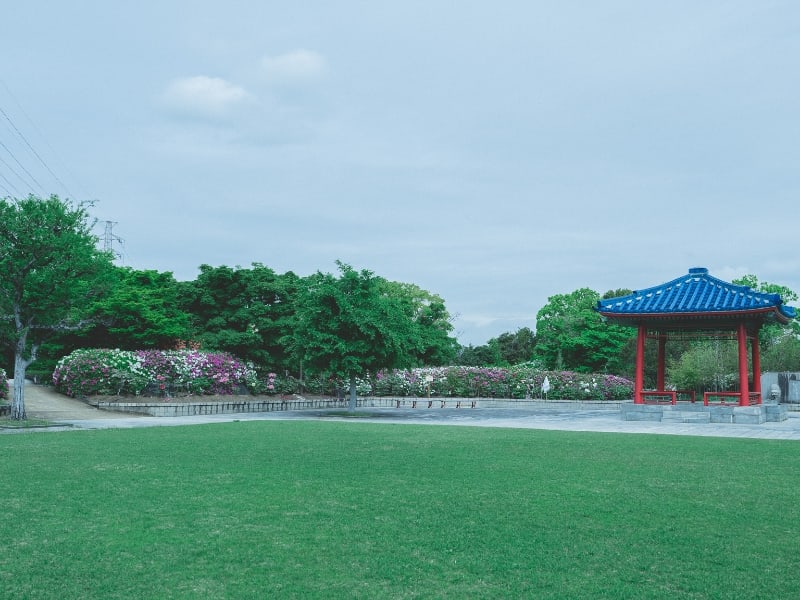
The Togen-dai was built to symbolize a utopia that represents peace. In spring, visitors can enjoy an array of flowers including peach, plum and peony blossoms.
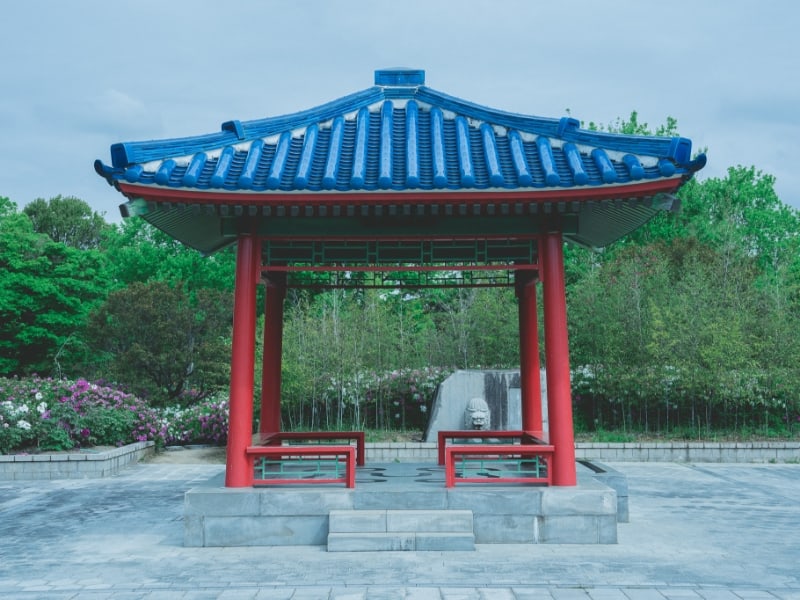
The stone, which was donated by Lianyungang, China, a friendship city of Sakai, was carved into the shape of a winding stream party. The stream's pattern is said to resemble the Monkey King born from the stone of Mount Huaguo.
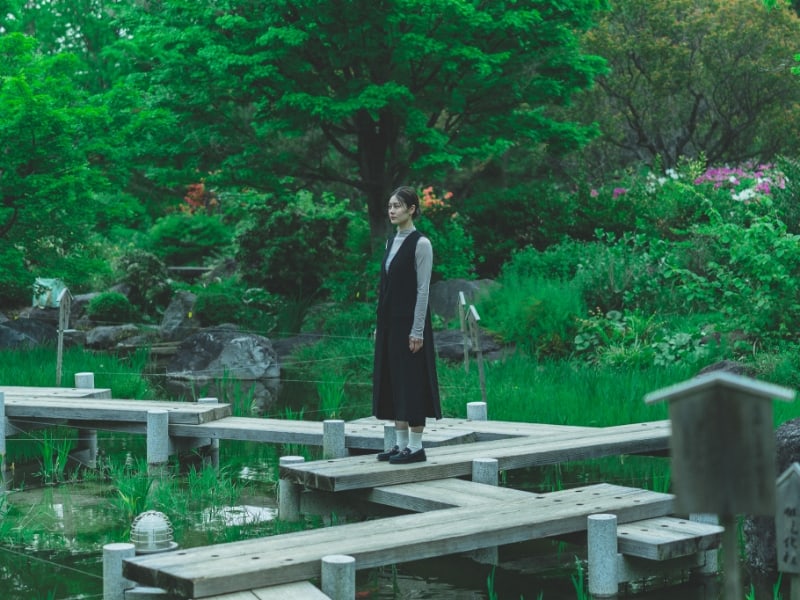
In early summer, Japanese and rabbit-ear iris flowers stand off against each other in the wind, while the stepping stones and bridge crossing the stream come with a cool elegance.
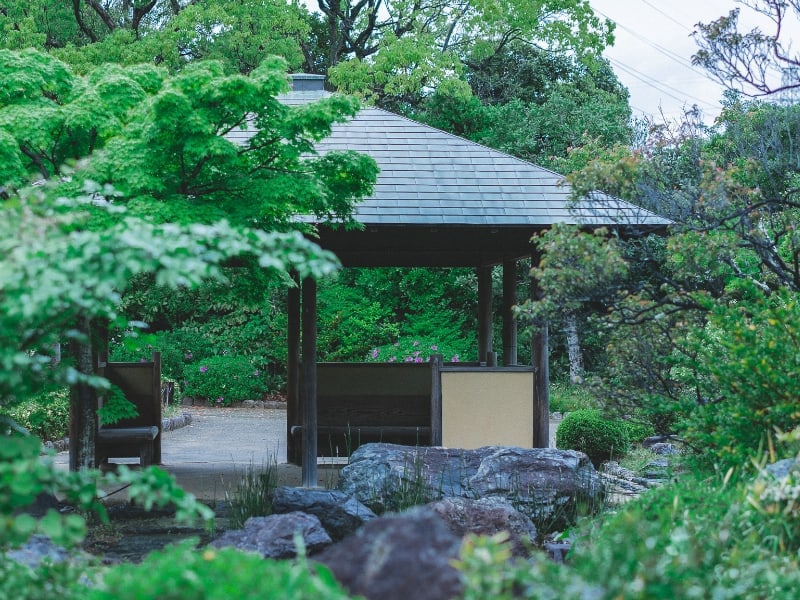
The Seitaitei, which is located across a bridge, was built as a rest area to silently admire flowers in a slightly secluded atmosphere. In addition to admiring flowers, you can also enjoy the sounds of leaves and the streams, alongside the fragrant scent of plum blossoms in early spring.
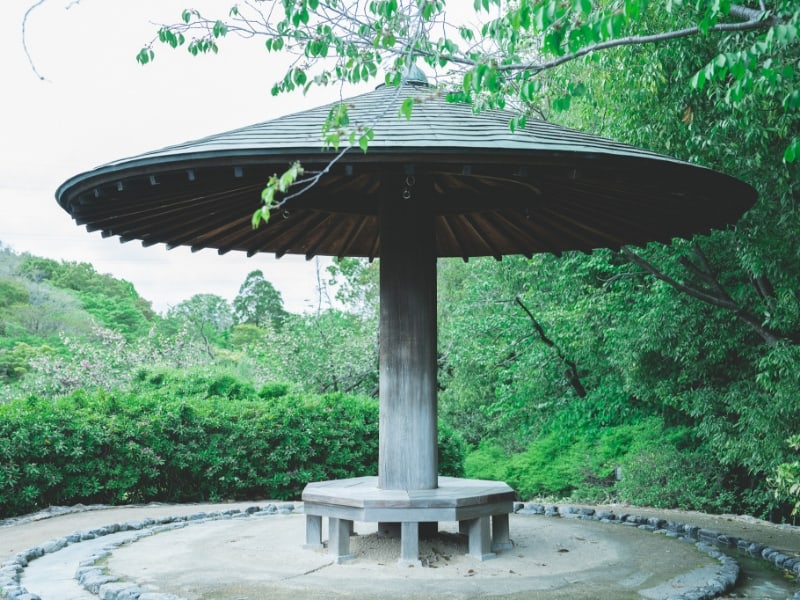
This is a spot that allows visitors to overlook the whole garden. In particular, it offers a close bird's eye view of the Chisen Pond, Rest House, Ingetsu Bridge and Eiha Bridge. In the distance, the view of the ancient burial sites of Daisen-ryo Kofun and Kamiishizu Misanzai Kofun is also breathtaking.
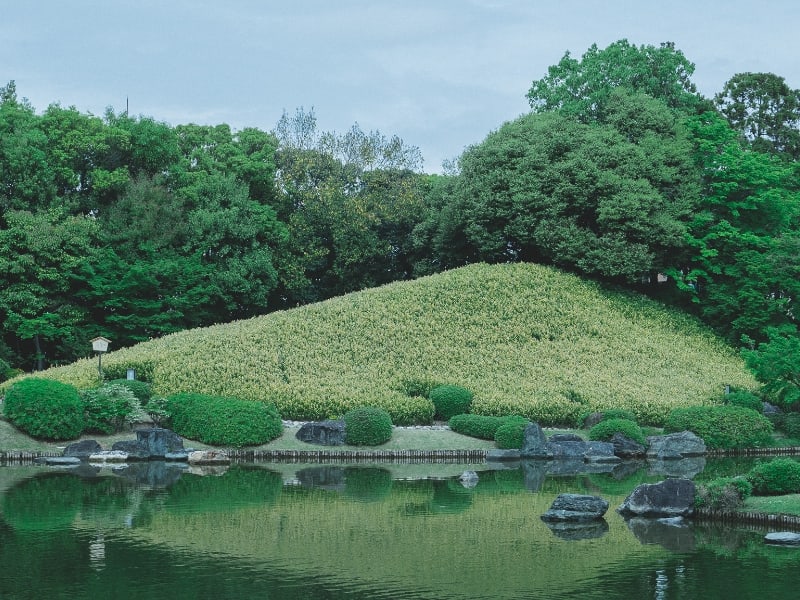
These artificial hills, which were modeled after Mount Lushan in Jiangxi Province, China, encompass some of the main scenery that represents the Japanese Garden in Daisen Park. They are located on the east side of the garden.
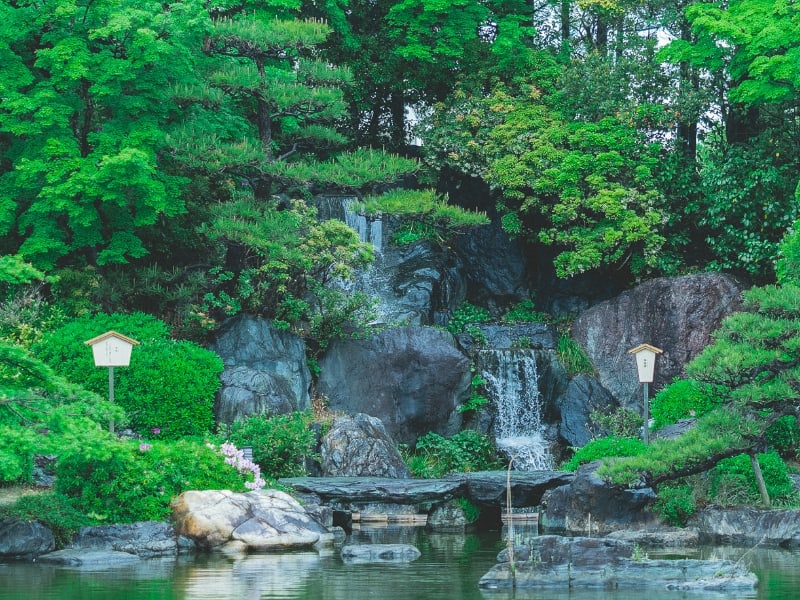
The stream and falls in the garden represent the gorges around Mount Lushan, as the "Kokei Stream" and "Hiryubaku Falls," and they are designed to honor Chinese tradition with the "Three Laughers of Tiger Ravine" surrounding them.
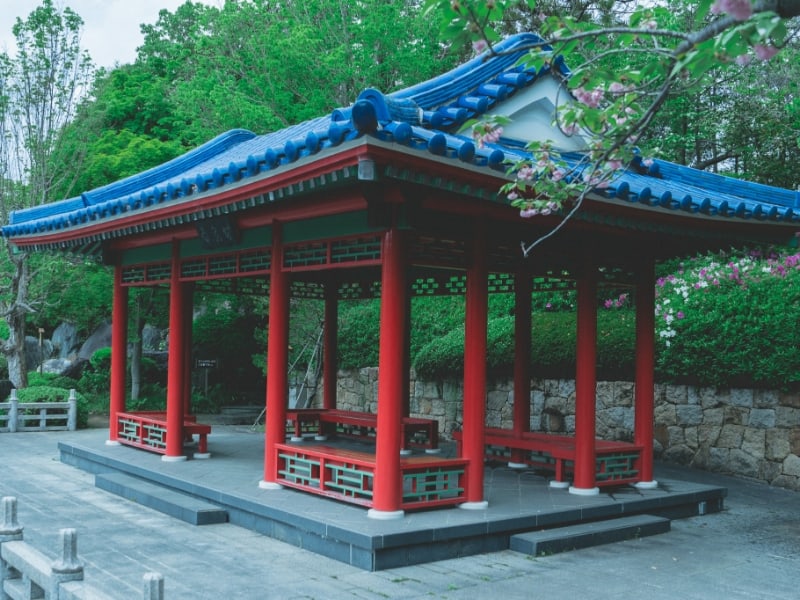
The origin of this rest house's name signifies that there is a clear and sweet spring flowing nearby.